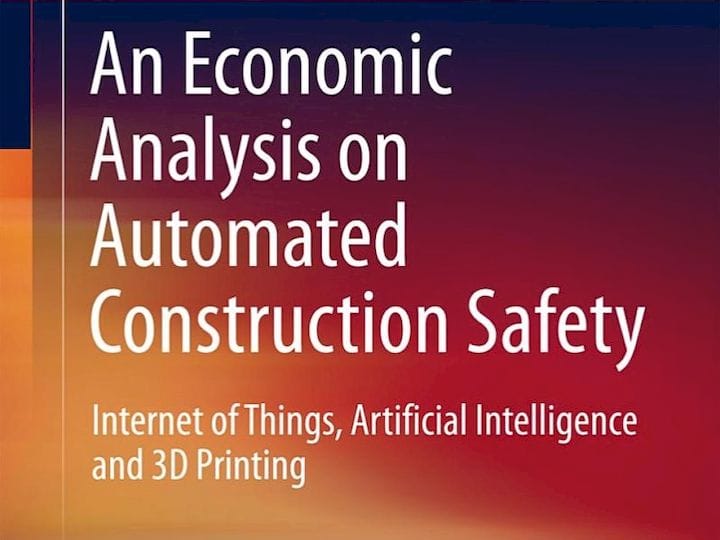![Automated Construction Safety [Source: Amazon]](https://fabbaloo.com/wp-content/uploads/2020/05/image-asset_img_5eb0945a44866.jpg)
This week’s selection is “An Economic Analysis on Automated Construction Safety” by Rita Yi Man Li.
This is perhaps an unusual selection for Book of the Week, as it isn’t really a book about 3D printing directly. Instead, it gets at an issue that’s been bugging me for a while. Now I get a chance to talk about it.
In the past couple of years there has been a bit of a boom, relatively speaking, in what’s becoming known as “construction 3D printing”. This is the science of printing buildings or similarly sized large structures. Today there are a handful of companies that market this type of equipment or as a service.
In almost all cases, the 3D printing technology employed for construction 3D printers is rudimentary — although quite large scale. Essentially these systems tend to either scale up a RepRap-style motion system and bolt on a concrete extruder, or they use an off-the-shelf robotic arm with a concrete extruder clamped to the effector end.
These systems have been quite successful in some cases, being able to successfully extrude notable structures. However, I’ve generally been down on these ventures because they all-too-often attempt to capitalize on the ridiculous “They 3D Printed A House In 24 Hours” meme that occasionally sweeps by in the media.
Printing a house in 24 hours is complete nonsense, as the devices simply extrude concrete. Would you live in a home made ONLY of concrete? With no roof? No doors? No electricity, water, HVAC, etc?
I didn’t think so.
The truth is that these companies are merely pursuing the act of making the concrete portion of construction a bit more efficient, and I might add they can actually do so.
Construction Safety Missing
But as I explained, they are missing the rest of the construction — which is the majority of the work.
There’s another thing I strongly suspect many of them are also ignoring: safety.
This book explores that aspect quite deeply, and from an academic point of view. While humanity has for centuries employed manual labor and manually controlled machines to effect construction, it is only recently that we’ve been exploring the notion of autonomous machines on construction sites.
Factories are quite familiar with autonomous devices, and you can bet they have hugely significant safety regimes to protect workers, equipment and products throughout the entire lifecycle of manufacturing.
I don’t think this is yet the case for construction 3D printing, and perhaps it’s time to start thinking about it. What might a safety regime look like for a 3D print construction site? That’s what this book explores.
Construction Safety Using VR, AR and Additive Manufacturing
Author Li discusses an overview of the technologies involved, which include not only 3D printing but also VR, AR and IoT. Li looks at safety issues in using robots in general and maps them to construction analogies.
There’s quite a bit of discussion about the software required to implement safety for robotics in construction, which is obviously quite important.
This book is clearly not for everyone, but some of you might find it quite fascinating to explore this entirely new world of autonomous construction safety.
Via Amazon











This week’s selection is “3D Printing Projects” by Dorling Kindersley, a.k.a. “DK”.